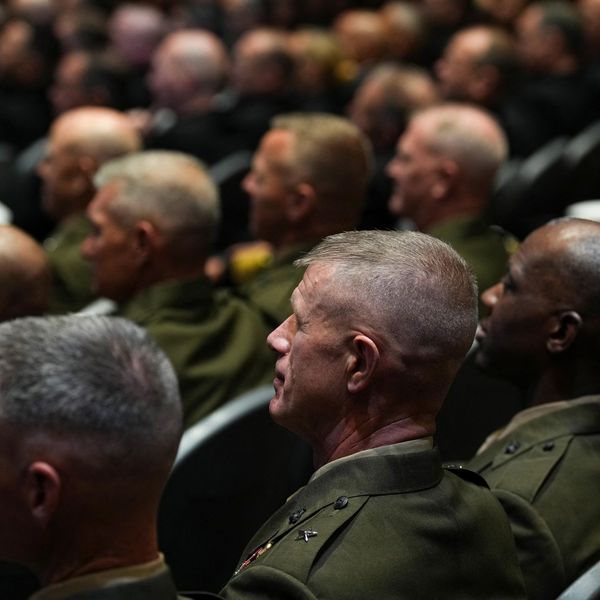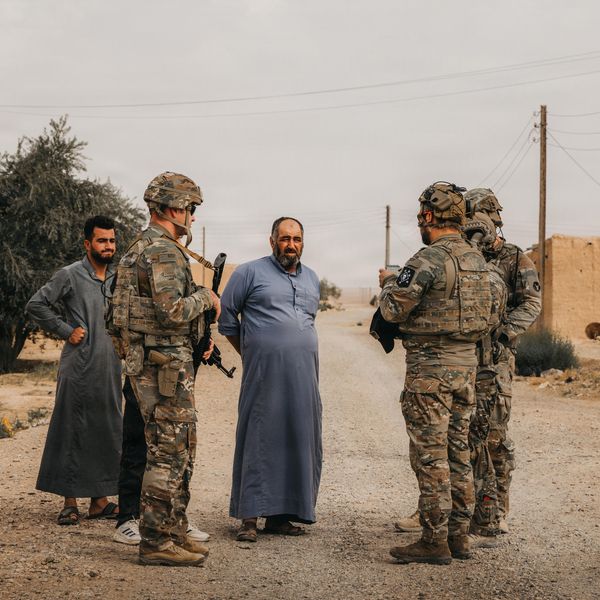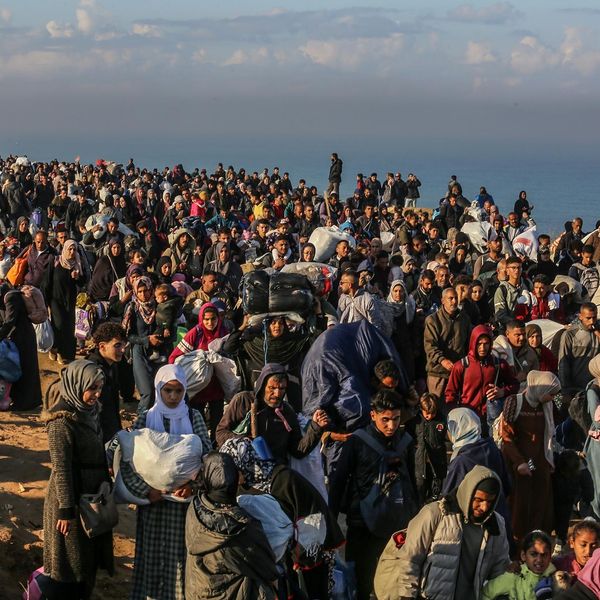The All-Volunteer Force Forum was founded in 2016 to begin stirring up a debate across the United States on how the country populates its military. Since then, it's been an uphill battle, but hosting conferences at universities across the country — and coming up in March, at the Catholic University in Washington, DC — has at least put the forum and the debate on the national map. Working with the National Commission on Military, National, and Public Service also helped give the forum some heft.
It was inevitable that the climate crisis — arguably the most catastrophic crisis the United States, indeed, the world, is facing — arose as one of the several force-defining threats the forum has addressed that might require the country to resume conscription. Millions of young, healthy, dedicated, well- and specially-trained men and women will be required to manage both the domestic and the international threats created by this crisis.
In the domestic realm, fighting massive fires, meeting the emergency requirements following multiple hurricanes striking simultaneously or unexpected deep freezes like the one currently ongoing in Texas, dealing with disappearing shorelines and even whole swaths of developed land suddenly overwhelmed by the sea, dealing with massive flooding following torrential and constant rains, and managing the temporary camps and facilities set up to house millions of homeless people, are just a few of the new missions they will confront, undertake, and manage between now and the close of the century.
Internationally — while the U.S. reputation for taking the lead in disaster relief and humanitarian assistance has taken significant blows over the past four years — there is no doubt that possessing unprecedented power projection capabilities means that the U.S. military will need to be at the forefront of such operations.
In addition to the many crises caused by sea rise, the more intense typhoons in the Pacific, the flooding and then the drying up of water sources occasioned by Himalayan glaciers disappearing, the coming massive changes in the Arctic and the Antarctic regions, the desertification of land, the acidification of the oceans, the salinization of coastal water wells and other supplies, and the lack of viable agriculture, will so rack the world that the U.S. military will be run ragged attempting to keep up.
The All-Volunteer Force will be utterly incapable of meeting these domestic and international challenges even if they were to occur separately, which they won't. Such challenges, and perhaps others yet imagined, will come on with a rush, simultaneously in some cases, but close enough together in most instances to make small efforts completely ineffective.
As climatologists are now acutely aware, their models have often been too optimistic. Recent revisions, for example, concerning the Arctic and, at the opposite pole, Antarctica, have been particularly worrisome.
As a member of the Climate and Security Working Group, or CSWG, I am acutely aware of some of these changes and predictions. While the purpose of the CSWG is to assess the national security implications of the climate crisis — most of our membership are connected to DOD, DHS or its FEMA, the U.S. Navy, or other defense-related organizations — the Group has discovered that "national security" has an extremely wide scope.
For instance, it's difficult to assess the impact of sea rise on the U.S. Navy and the ship-building and repair facilities in and around Norfolk, Virginia, without also seeing some of the impact on the surrounding civilian jurisdictions in the Tidewater area of Virginia. Big decisions await: build extremely expensive seawalls, relocate people and facilities, or do some of both. Similar issues are present in Charleston, New Orleans, Houston, and San Diego.
At the AVF Forum we have recently begun to tackle a qualitative and quantitative assessment of just how many military assets will be required and whether or not traditional training, units, and equipment will be adequate, or if an entirely fresh approach needs to be adopted.
Simply looking at the likely mission sets tells us several millions of troops, skilled in both traditional and completely new missions, will be necessary. Perhaps the Civilian Conservation Corps of the 1930s is a model, though the overall mission would not be preparation for war but preparation for the survival of much, if not all of the human race.
Thus, we need a new mission set — domestic disaster relief on an unprecedented scale, agricultural skills pertaining to new and very different forms of food development and distribution, and refugee management aimed at millions of displaced people and construction of the massive encampments to house them.
We’ll also need flood control and flood repairs that might include the construction of dams as well as their demolition, construction of water facilities and even desalinization plants that turn seawater into fresh, potable water.
We’ll need to open new lands further north to extend food-growing capacity and we’ll require management of remedial actions to be taken should the Arctic, the Antarctic, or even Greenland's ice packs suddenly deteriorate rapidly and add meters to the levels of sea rise. And we’ll need life-saving aid to desperate peoples all over the globe.
There will be plenty of volunteers once reality strikes, but, as usual, such epiphanies are often too late. At the AVF Forum, we believe the country needs to begin planning immediately and in that regard we are heartened by the Biden administration’s recent announcement that dealing with the climate crisis is a top priority.
We also believe the Selective Service System must be reformed with registration of both men and women hastened. Within just a few years, Congress should enact full conscription and begin drafting men and women into this climate change corps. The Defense Department should develop a two-pronged approach: a smaller contingent of the military that maintains its traditional warfighting skills and a much larger and conscripted contingent that focuses on the inevitable climate-related tasks we will soon confront.
We believe that initially incorporating these men and women into the Reserve Components — primarily the Federal parts such as the U.S. Army and Marine Corps Reserves — would be the most efficient way to start.
At the Catholic University on March 31, the AVF Forum will highlight the climate crisis as the nation's number one threat. We also believe that the All-Volunteer Force will come up woefully short if it alone tries to combat this threat. We need a national effort, one that brings the sort of people-power commitment to the task that America fielded during World War II. Only this time the crisis is not about world domination by unspeakable tyrannies, but instead the survival of our species
















